#yang province
Photo

Liu Yao’s Army ‘The Yang Alliance’
(Left to Right)
Top Row
Xu Gong, Taishi Ci, Ze Rong
Upper Middle Row
Lu Kang, Yan Baihu, Yan Yu
Lower Middle Row
Liu Xun, Zhou Xin, Zhu Hao, Sheng Xian
Bottom Row
Hua Xin, Liu Yao, Wang Lang
A motley collection of scholars, warriors, eccentrics and opportunists.
Ze Rong was a treat to design. I’m surprised he doesn’t get more attention in 3K-related media.
#Liu Yao#Wang Lang#Hua Xin#taishi ci#yan baihu#ze rong#yang province#Sun Ce#Sun Wu#Eastern Wu#Three Kingdoms#Romance of the Three Kingdoms#sanguosha#sangoku#Han Dynasty#Cao Cao#historical fiction#webcomic#ttoca
4 notes
·
View notes
Text

Hanging Up Persimmons
Autumn in Shanxi province, China. The mountainous region located in the Taihang Mountains is so cold and dry that hangings made of persimmon becomes the main source of income for local farmers. The persimmons are harvested, peeled and dressed, and hung under the eaves in bunches, waiting to soften and freeze, hoping they will bring a good price in the New Year.
Photograph: Zhonghua Yang
Pink Lady Food Photographer of the Year
#zhonghua yang#photographer#pink lady food photographer of the year#persimmons#autumn#shanxi province#china#taihang mountains#culture
8 notes
·
View notes
Text
I apologise for the person I am about to become when Light Chaser Animation’s New Gods: Yang Jian movie drops.
#New Gods: Yang Jian#<-- please block this tag if you don't want Erlangposting#for a good month at least this is going to be an Erlangblog#where we talk about Erlangthoughts#and look at Erlangcinematography#and stan Erlang Shen - Lord of Sichuan Province - Flood Stopper - Sun Shooter - Dog Lover - Spear Wielder#God of Three Eyes - the Second Son - Demigod - the leader of the Seven Sages -the head brother of Mount Mei - the Yang Jian of Guanjiang kou#Erlang Shen
31 notes
·
View notes
Photo
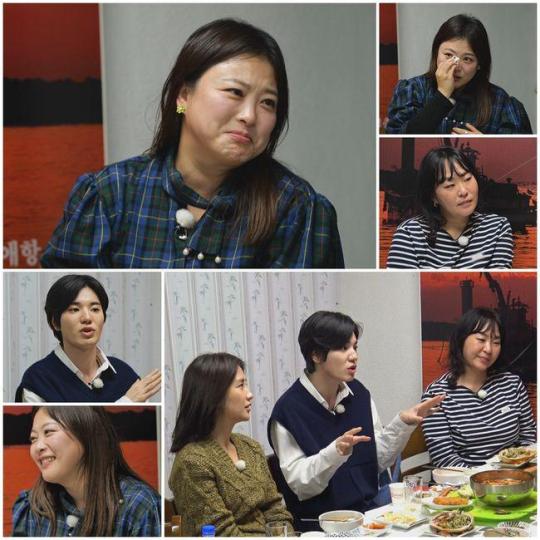
Sim Jin-hwa's 7 Years Only Cerebral Hemorrhage Relapses: Confessions of Disappointment
#7 years#Jung Ju-Ri#Confessions#Shin Ae-ra#Park Ha-sun#The Intern#Lee Sung-jong#Gangwon Province#South Korea#Yang Yang
0 notes
Text

Ching Yang Tung (Chinese Photographer)
"Fishing Nets, Fujian Province of China".
Photography.
628 notes
·
View notes
Note
what is war of faith about? is it worth a watch apart from just wang yibo(being gay?)? and where should i watch it?
you were all expecting me to do this so okay let's see how many others i can drag down this shenlai (i think this is the ship name we've settled on?? i have seen many 沈来之笔 tags on ao3 so i'm assuming that's what the chinese fandom has settled on) hole.
what: republican era communist spy drama (finance bros edition) // completed // 38 eps, roughly 40 mins each
where: iqiyi (standard disclaimer that i don’t watch with subs so i don’t speak to the quality of eng subs)
why: *chanting* yibo yibo yibo yibo yib- wang yang?? xiansheng???? i'll preface by saying i don't watch many republican era shows - it's really just not my thing, like even zhu yilong couldn't make me watch one and that's saying a lot, but i did finish and quite enjoy this one!! extremely strong cast on this show, and the story moved fast enough and had enough action in it that it kept my attention.
meet my boy wei ruolai:

ruolai is from a v humble family, worked hard to put himself through night school but is having trouble stepping foot into the finance world because he has no money, no connections, no diploma (the school is holding off on issuing him one because he's from a communist-stronghold province 😪). he's working several jobs to make ends meet in shanghai when he decides to interview for a job at the central bank.
he aces his entrance test! ofc he does! ruolai is a bit of a whiz with numbers, and is very very very determined to get the job - the place could be on goddamn fire for all he cares, he'll finish his goddamn test and get this goddamn job even if it kills him.
his performance gains him the attention of shen tunan:

xiansheng!! 😍💖💕
chief of the central bank, The Guy™ of the finance and banking industry in shanghai. extremely attractive in a suit. 100% dilf certified.
xiansheng takes a shine on ruolai, but ends up not being able to hire ruolai despite his excellence because, again, ruolai is from a communist-stronghold province, and they don't want to take any chances with him possibly having communist ties.
does that set ruolai back?? no. my boy sneaks into a party that shen tunan is holding at his mansion, and convinces shen tunan to hire him by essentially picking apart shen tunan's ~secret strategies~ that he's uncovered just by following the finance news and making smart deductions 🥺💚
shen tunan caves and personally hires ruolai as his PA, and begins mentoring him and teaching him the ways of the banking industry.

the show is mostly about ruolai's growth in the central bank and the shift of his political beliefs, centred around the kmt and communist party's conflict in that era. the premise of the show is fairly simple - most republican era dramas move in the same direction. this one was well-written, had a solid cast, and beautifully shot.
the development of stn and wrl's relationship in this show was good! it's v shippable, if that's something that is important to you. ngl, i did stay through till the end because these two were so interesting.
we have proud teacher shen tunan who is so so proud of his boy and takes ruolai suit-shopping and tells him how special he is :
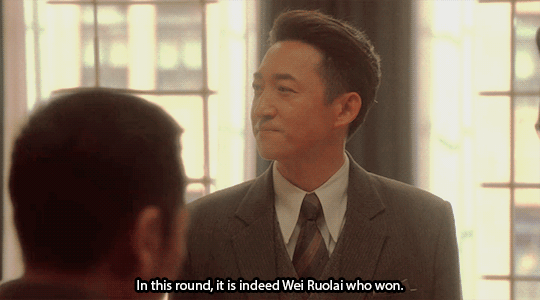
starry-eyed disciple wei ruolai who would literally do anything for shen tunan:

he really does mean it when he says that. he gets tortured and thrown in goddamn jail for shen tunan, and he just bears it all and doesn't let himself react in any manner that could harm shen tunan.
i started this strictly for yibo, and had no expectations that i would enjoy it, but guys...........wang yang is 🥵🔥 in this as shen tunan, and this ship just.......sails itself. what else was i supposed to do except go three hundred different levels of ahhhhhhhhh over them.
ANYWAY. strong rec. like at least 8.5/10. even if you're just in it for yibo (who is EXCELLENT in this, the whump scenes are incredible), or if you just want to ship shenlai, the payoff is strong in this.
161 notes
·
View notes
Text
An intro to the historical Zheng Yi Sao
Ruibo Qian's character in Our Flag Means Death is based on a real person, though like all its real pirates, she is a loose interpretation. In particular, the real Zheng Yi Sao wasn't born until 57 years after the real Blackbeard died!
In real life, she lived from 1775 to 1844. She was known by a variety of names; her birth name is usually given as Shi Yang. Zheng Yi Sao is the name most often used, which literally means "the wife of Zheng Yi" (more on him later), and you may also see variations like Ching Shih or Madam Cheng, depending on transliteration. Calling her Zheng, as Oluwande does, is good, or ZYS in fandom chat, but if fic writers crave a more personal connotation for a scene, Yang is a good choice for a given name consistent with the real woman. It's like the difference between Mr. Buttons and Nathaniel.
She was born in the Guangdong province, and many bios of her claim she worked on one of the boat brothels there, but this is speculation only.
When she married Zheng Yi, he was a successful member of a pirating dynasty, working as a privateer for emperors of Vietnam. The couple collaborated to unite six different pirate fleets operating off the Guangdong coast into a confederation, sealed with an agreement signed by the captains of each. Zheng Yi was informally recognized as the overall leader of the confederation until his death in a storm two years after the signing.
Zheng Yi Sao had the respect of other key figures in the alliance, and her smooth assumption of leadership was followed by a period of huge success and expansion for the pirate confederation, driving the Chinese government to desperation. This is where her reputation as a pirate "queen" comes from in real life, though I'm excited to see where the show goes with her fictional conquest of China!
In 1810, Zheng Yi Sao recognized that the confederation faced internal fractures and additional opposition, as Portuguese and British military forces allied with Chinese ships, so she led the confederation to bow out on a high, and use their immense power to bargain for a peaceful retirement, surrendering ships and weapons for pardons, supplies, and money. Although it's fictional that her crew was predominantly women, when Zheng Yi Sao surrendered, she did so accompanied by a delegation wholly composed of women and children who belonged to the confederation. At that time, the confederation consisted of 226 ships, 24 of which personally reported to Zheng Yi Sao.
If you're doing the math, she was only in her mid-thirties, and was far from done with life. She remarried, to one of her former captains, Zhang Bao, and accompanied him to the Penghu Islands, where he commanded a garrison. After his death, she returned to Guangdong and had another career of twenty-odd years, becoming the owner of a casino until her death at age 68 or 69 (nice).
She was one of the most successful pirates in history, both because of her power and her ability to survive it. I think she's neat as hell, and so have a lot of fiction writers! You might have encountered versions of her, or characters inspired by her, before, in things like Pirates of the Caribbean, the Bloody Jack novels, Assassin's Creed, and Doctor Who. It's fun to see a form of her in this! We can expect her arc to progress differently, but I hope having some context will help.
The most helpful things to note for the rest of the season for ofmd fans will be that Zheng is her surname, she wasn't really a contemporary of the other historical figures, and that her connection to sex work should not be treated as a fact, whether you want to include it in this fictional interpretation or not.
263 notes
·
View notes
Text
MXTX Interview with Risa Wataya for Subaru Magazine P.7
Which creative works influence you:
Risa: Please tell us which creative works influence you.
Moxiang: Professor Jin Yong's wuxia novels (*)! Professor Jin Yong is my number one teacher in the craft of writing. His skill in crafting wuxia stories, his artistic palate, the sheer intellectual depth and philosophical complexity of his stories and characters. Professor Jin Yong's wuxia novels have a profound and immeasurable influence on all modern Asian creative professionals.
(*: the legendary late professor Jin Yong. He's not as well-known in English-speaking spheres due to the complexity of his works being very difficult to translate to languages outside of the Sino-Tibetan language family. But in Asia, he's a literature titan. He's comparable to Tolkien in that he laid the foundation and codified the tropes of wuxia as a modern genre (alongside Gu Long and Liang Yusheng) and brought about the first and subsequent wuxia waves, and that there's also university courses and entire research field on Jin-Yong-ology. However, he's a much more prolific writer, having produced 15 wuxia series, among which 14 are of comparable length or longer than the Lord of the Rings and The Hobbit combined.
It would be no lie to say there's not a single creative professional in Asia that is not influenced by Jin Yong in some way, shape, or form.
One of Jin Yong's trademarks is the overwhelming, often obsessive, sometimes destructive love that his characters exhibit. There's not one work of his that is not threaded through with larger-than-life romance, not just among the protagonists, but also among the villain characters. The trend of modern Chinese literature, especially wuxia and xianxia, to portray larger-than-life romance can be traced directly to Jin Yong's influence.
Interestingly, he's also credited as having accidentally created the proto icon of danmei as a genre.
I'm sorry. I'm so excited I want to cry. Professor Jin Yong is also my first teacher in the craft of writing. It turns out we all step in the footsteps of the giant, huh, Moxiang?)
I also watch a lot of 90s Hongkong movies. Do you know "Shaolin Soccer'?
Risa: I do know!
Moxiang: Stephen Chow's comedy movies, Tsui Hark's wuxia, and fantasy horror movies. Lam Ching-ying's walking corpse movies. I love all of these.
Risa: That's closer to jiangshi (*) than modern zombies.
(*: a type of Chinese walking corpse. The name literally translates to stiff corpse. Jiangshi is typically translated into Chinese hopping vampire in English due to their similarity to Western vampires. They are the dead that comes back to life. They suck yang energy from living people. They fear the smell of garlic. Etc... Jiangshi has real-life basis in an extinct profession in China: the corpse walker, i.e., people who made a living out of 'walking' corpses back to their home provinces in times of war and chaos. Corpse walkers are mentioned in Liao Yiwu's historical book 'The Corpse Walker')
Moxiang: That's right. That's right. A hopping jiangshi. I watch a lot of such movies. Some movies are from before I was born, such as 'A Chinese Ghost Story' and 'Sword Man' (*). I have watched them more than ten times! If I meet someone who has never watched those movies before, I will enthusiastically drag them along while saying, "Let's watch them together!" My novel bears obvious and immense influence from these movies... For example, the funny scenes in my story are very close to the atmosphere of comedy scenes from Hongkong cinema. Or the walking corpses in my story. My inspiration came from these undead corpses. In the novel, I mentioned using glutinous rice as a cure for corpse powder. This knowledge came from the movie "Professor Jiangshi" (named 'Mr. Vampire' in English in the Wikipedia).
(*: Both of these movies are Tsui Hark's movies and are counted among the top 100 best movies of Asian cinema. They are known for their fantasy elements, eroticism, and homoeroticism. These movies came from a time where Asian cinema was pushing boundaries left, right, and center. Swordsman and its spin-off were adapted from Professor Jin Yong's The Smiling Proud Wander. The very same work in which he accidentally created the proto-icon of danmei. I wrote an essay about this as part of danmei history last year. I will make a separate post after this.)
Risa: To be honest, when I reached the part where glutinous rice was used to cure corpse powder in 'Mo Dao Zu Shi,' I was moved.
Moxiang: Ah? A Japanese author saw the glutinous rice scene in my novel and linked it to jiangshi movies... That is so surprising!
Risa: When I was young, I watched a lot of jiangshi movies. I love them!
Moxiang: I feel increasingly close to Ms. Risa now. As for other foreign literature, Emily Bronte's 'Wuthering Heights' greatly influences me. When I read it during elementary school, I was shaking from excitement. Perhaps because of the influence of Wuthering Heights, that whenever I see complex, intertwining love-hate situations, I feel such joy and nostalgia in my heart.
There's also my favorite childhood mangaka Rumiko Takahashi! This kind of light-hearted, rowdy atmosphere where characters argue and rib each other is so cute! I especially like 'Ranma 1/2'. I think it's the best comedy manga. Other than that, 'Inuyasha' can only be described by the word romantic. Romantic! To this day, Kikyo is still a goddess in my heart.
Risa: Although 'Ranma 1/2' is a work that features China in it, what do Chinese people think about it?
Moxiang: The first thought that comes to my head is 'charming!' After that is probably fond familiarity. This work (Ranma 1/2) features many Chinese elements. I feel that the distance between our hearts is lessened.
To be Continued (The next part will be the last)
Translator: Sythe / NPD Khanh
309 notes
·
View notes
Photo
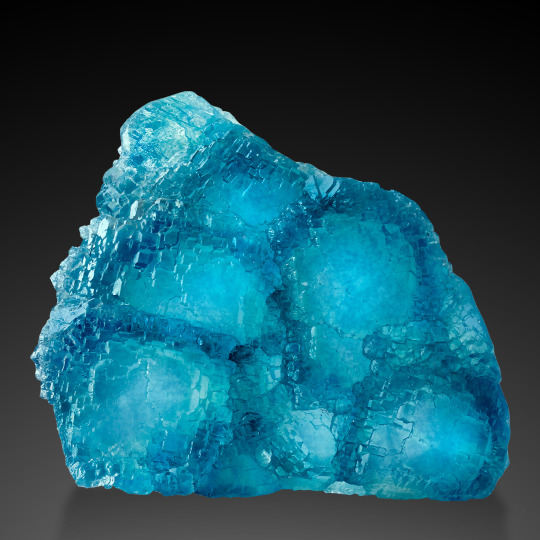
Fluorite
Xia Yang Mine, Fujian Province, China (Peoples Republic)
847 notes
·
View notes
Text
Random Stuff #14: Cats in China--History (Part 2)
(Link to Part 1)
(Warning: Very long post ahead with multiple pictures!)
Cats Becoming Pets
In the book Dreams of Splendor of the Eastern Capital (《 東京夢華錄 》), a memoir by Meng Yuanlao/孟元老 about life in the then “Eastern Capital” or Bianliang/汴梁 (today known as Kaifeng/开封, located in Henan province) in Northern Song dynasty (960 - 1127 AD), there was a section called “Miscellaneous Goods”, which revealed that there were special street vendors who sold horse feed, dog food, and of course, cat food and cat treats:
“If you kept horses, there were two people who sold hay daily; if you kept dogs, there were dog food being sold; if you kept cats then there were cat food and small fish”. (“若養馬,則有兩人日供��草;養犬則供餳糟;養貓則供貓食並小魚”)
Another book that shed light on this change in more concrete terms is Fleeting Dreams of Splendor (《夢粱錄》)--which as you can probably guess from the title, is a memoir modeled after Dreams of Splendor of the Eastern Capital, this time about life in Southern Song dynasty (1127 - 1279 AD) capital city Lin’an/臨安 (today known as Hangzhou/杭州, located in Zhejiang province). In the book it was mentioned that people in the capital kept white or yellow long haired cats, called “lion cats”/獅貓, which couldn’t catch mice and were only kept for their looks, or in other words, these cats had become actual pets:
“People of the capital kept cats to catch mice, and the cats have long hair. Those that were white or yellow were called ‘lion cats’, these cats could not catch mice and were kept because they looked beautiful”. (“貓,都人畜之捕鼠,有長毛。白黃色者稱曰「獅貓」,不能捕鼠,以為美觀”)
During Song dynasty, folk customs also developed around cat adoption. Cat adoption, called pin/聘 or na/納, was treated like a “wedding” of sorts, complete with a “bride price” and a “marriage certificate” contract/契. The “bride price”, of course, was paid to the family that the cat came from, and usually took the form of some salt (this act is called ”bringing salt”/裹鹽; historically salt is a valuable commodity) or some small fish skewered on a willow branch (called “buying fish and skewering with willow”/買魚穿柳 or simply “skewer of willow”/穿柳). The contract, however, had quite a mysterious air about it and vaguely resembled a Daoist talisman:

^ Template of a cat contract, from Yuan-era (1271 - 1368 AD) book Newly Published Reference on Ying Yang and Selection of Dates/《新刊陰陽寶鑑剋擇通書》. Top says “Cat Contract”/貓兒契式. Content consists of a drawn picture of the cat in question at the center, and the terms of the contract written in a counterclockwise order that spiraled outwards from the picture of the cat, which read:
“A cat is Black Spots¹, it used to live before the bodhisattvas of the West, Sanzang² brought it home with him, and it has since been protecting Buddhist scriptures among the people. The Offeror is Moujia³ , who is selling (this cat) to a certain neighbor. All three parties⁴ has agreed upon the price of __, so __ will be returned as the contract finalizes. May the Offerer become as wealthy as Shi Chong⁵, and as long-lived as Peng Zu⁶. (From now on, the cat) Must patrol the grain storage diligently, and must catch rat thieves without slack. (The cat) Must not harm the chickens and other livestocks, and must not steal any sort of food. (The cat) Must guard the home day and night, and must not wander to the east or west. If (the cat) breaks these terms and wanders off, it shall be punished in the courtyard. __ year __ month __ day, Offeror __.”
The foot of the contract read:
”To evaluate a good tabby cat: there must be stripes on the body, and the stripes on the limbs and tail must be just right”⁷
“King Father of the East⁸ see to it that (this cat) does not wander south”
“Queen Mother of the West⁸ see to it that (this cat) does not wander north”
“Received on a day blessed by the Eminent Benefactor of Heavenly Virtues and Eminent Benefactor of Lunar Virtues⁹”
“Returned on a day blessed by the Eminent Benefactor of Heavenly Virtues and Eminent Benefactor of Lunar Virtues”
Notes:
“Black Spots”/黑斑: placeholder cat name.
Sanzang/三藏 refers to Xuanzang/玄奘, as in the real life inspiration of the character Tang Sanzang/唐三藏 in Journey to the West. It was widely believed that domestic cats had came to China from India with traveling Buddhist monks, and that they were protecting the scriptures from damage by rodents.
“Moujia”/某甲: placeholder human name.
“Three parties”: Offeror, Offeree, and Witness.
Shi Chong/石崇 was an extremely wealthy official during Western Jin dynasty (266 - 316 AD) who loved to compete with others over who was the wealthiest.
Peng Zu/彭祖 is a figure in legend and a Daoist immortal who had lived for 700 years according to legend.)
This is part of the practice of evaluating cats based on looks, called xiangmao/相貓.
King Father of the East/東王公 and Queen Mother of the West/西王母 are gods of Yang and Yin respectively.
Eminent Benefactor of Heavenly Virtues/天德貴人 and Eminent Benefactor of Lunar Virtues/月德貴人 are deities representing celestial objects, and are part of the Four Pillars of Destiny/四柱命理 concept in Chinese astrology, where basically different days and times are presided over by different celestial objects and therefore different gods. A day that is blessed by both of the aforementioned Eminent Benefactors is considered to be a very auspicious day.
As a cat owner, I could most definitely feel the helplessness and desperation emanating from this contract. Invoking deities in the hopes that the cat will do its job, not destroy stuff, and not simply run away......I’m sure many cat owners throughout the ages and across the world could sympathize with this sentiment. The special emphasis that was placed on keeping the cat from running away was probably because back then, people lived in residences that consisted of buildings surrounding a courtyard in the middle (for example, a siheyuan/四合院), so it was extremely easy for cats to run out of the residence and become lost.
Anyways......back to history.
Song-era poets wrote many poems about cats, and both Song-era and Yuan-era painters painted many works about cats (which I will cover in my next posts!). At the same time, cats were painted in Song-era tomb murals along with sparrows as a sign of longevity, since cats are māo/猫 and sparrows are què/雀, and when said together they sound like the word mào qí/耄耆, which means “elderly people”.
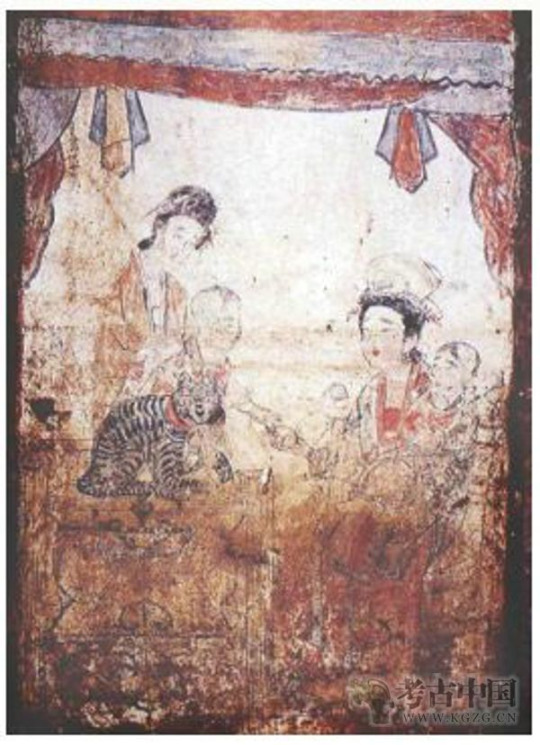
^ Tomb mural depicting a tabby cat with a sparrow in its mouth. From a Northern Song-era tomb discovered in Dengfeng, Henan.
Ming dynasty (1368 - 1644 AD) emperors were also big-time cat lovers. Of note were Emperor Xuanzong of Ming/明宣宗 (personal name Zhu Zhanji/朱瞻基), who painted cats, and Emperor Shizong of Ming/明世宗 (better known as Jiajing Emperor/嘉靖帝), who reportedly loved his cat Frosty Brows/霜眉/Shuangmei (I swear this name sounds a lot more artsy in Chinese) so much that he bestowed the title of Qiulong/虯龍 (note: Qiulong is a type of Chinese dragon that is either defined as horned or hornless depending on the source) upon it, and when Frosty Brows died, he ordered a tomb be constructed just for his cat, then ordered high-ranking officials to write eulogies for Frosty Brows:
“During Jiajing Emperor’s reign, there was a cat in the palace whose fur was slightly blue-ish except the glowing white brows, so it was named ‘Frosty Brows’. This cat understood His Majesty well, and when His Majesty went somewhere in the palace or visited a consort, it would walk ahead and lead the way. While His Majesty slept, it would stay nearby. His Majesty adored it the most. When it died, His Majesty ordered it be laid to rest at the shady side of Mt. Wansui (today called Jingshan/景山), and a stone stele was to be erected marking its grave as ‘The Grave of Qiulong’”. (嘉靖中,禁中有貓,微青色,惟雙眉瑩潔,名曰“霜眉”。善伺上意,凡有呼召或有行幸,皆先意前導。伺上寢,株橛不移。上最憐愛之。後死,敕葬萬歲山陰,碑曰‘虯龍塚’)
-- Old Rumors Under the Sun, “Within the Palace of Ming Part 3″/《日下舊聞考·宮室·明三》
“Later when a lion cat of the Palace of Eternal Longevity died, His Majesty grieved and ordered it be laid to rest at the shady side of Mt. Wansui in a coffin of gold, then ordered the senior officials to write eulogies and a funeral ritual be done, so the cat’s soul may achieve transcendence. However because the prompt seemed awkward, most of the senior officials could not perform at their usual levels, only the Scholar of Rites Yuan Weiwen came up with such words as ‘the lion metamorphosed into a dragon’, which delighted His Majesty”. (“最後西苑永壽宮有獅貓死,上痛惜之,為製金棺葬之萬壽山之麓,又命在直諸老為文,薦度超升。俱以題窘不能發揮,惟禮侍學士袁煒文中有「化獅成龍」等語,最愜聖意”)
-- Compiled Rumors of Wanli Era, Chapter 2/《萬曆野獲編·卷二》

^ A Nebelung cat (image source). According to the description above, Frosty Brows probably looked like this cat but with white markings above the eyes. RIP Frosty Brows, you shall be remembered.
Of course, Frosty Brows wasn’t the only pet cat in the palace. According to Moderate Records/《酌中志》, a book that’s mostly about life in Ming-era imperial palace (which is the same as the Palace Museum today), there was a special place called the “House of Cats”/貓兒房 that employed 3-4 servants just to take care of the cats that were favored by the emperor. These cats even had titles and nicknames: un-neutered male cats were called xiaosi/“小廝”/”lads”, neutered male cats were called laoye/”老爺”/“old men”, female cats were called yatou/”丫頭“/”gals”, and cats with titles were called maoguanshi/”貓管事”/“cat butlers” .
Speaking of royal kitties that left their names in history, Emperor Qianlong (1711 - 1799 AD) of Qing dynasty commissioned a series of paintings of his cats from the court painter and Jesuit missionary Ignatius Sichelbart (also known by his Chinese name 艾啟蒙/Ai Qimeng), and this series of 10 paintings were collectively known as 《貍奴影》, or “Cat Images” (li/“貍” or linu/“貍奴” are both archaic names for cats). Here is a Douyin video of these 10 paintings and the names of these 10 royal felines, translation courtesy of @rongzhi.
The Ins and Outs of Feline Ownership
By Qing dynasty (1636 - 1912 AD), there were two encyclopedia-like books specifically about cats, called The Compendium About Cats/《貓苑》 and The History of Cats/《貓乘》 respectively, which were extensive compilations of records and mentions of cats from older texts, including everything from folktales about cats to cat behavior to how to take care of cats, which served as guides for new cat owners back then. Although cat owners today have much more reliable and scientific sources on how to take care of cats (***Please keep in mind: this post is for fun! If you have any questions regarding the health of your cat, please ask your local veterinarian!***), books like these still provide an interesting glimpse into how cat owners of old went about taking care of their cats. Here I will be presenting a few passages from The Compendium About Cats/《貓苑》 that I found to be pretty cool or interesting:
How people used to bring cats back home and litter train them:
“The way to adopt cats: use a dou¹ or a bucket, and carry it in a cloth sack. Once you reach the home of the previous owner, ask them for a single chopstick, then put both cat and chopstick in the bucket inside the sack to bring them back home. Should you encounter potholes on the way back, you must fill the pothole with rocks before passing over it. Upon arriving back home, take the cat along to worship the household stove god and greet the resident dog. When you are done, take the chopstick and stick it in a mound of dirt in the yard, then tell the cat to never urinate or defecate inside, but still allow the cat to sleep on the bed. This way the cat will not run away”. (“納貓法,用斗或桶,盛以布袋,至家討著一棍,和貓盛桶中攜回。路遇溝缺,須填石以過,使不過家,從吉方歸。取貓拜堂灶及犬畢,將箸橫插於土堆上,令不在家撒屎,仍使上床睡,便不走徃”)
How people thought neutering changed behavior:
“Male cats must be neutered to blunt its might, so their toughness may be softened, and they will soon become plump and friendly”. (“公貓必閹殺其��氣,化剛為��,日見肥善“)
What to feed cats and what not to feed cats:
“Cats will grow sturdy when fed eel, and will grow plump when fed pork liver. However if cats are fed too much meat broth, it will give them intestinal issues”. (“猫食鳝则壮,食猪肝则肥,多食肉汤则坏肠”)
“Catnip”:
“Cats will become inebriated after eating mint²”... “Mint is the alcohol of cats, as such the leaves are fresh and relaxing”. (“貓食薄荷則醉”...“貓以薄荷為酒,故葉清逸”)
Treatment for fleas:
“When a cat has fleas, mash up peach tree leaves and chinaberry tree roots, boil the paste into a warm brew and bathe the cat in it to kill the fleas; otherwise rubbing camphor tree shavings over the cat also works”. (“貓生虱,桃葉與楝樹根搗爛,熱湯泡洗,虱皆死,樟腦末擦之亦可”)
Notes:
Dou/斗 (here pronounced dǒu), was historically a type of container that was originally for wine, and then became an apparatus used to measure volume (particularly for grains), so dou also doubled as a unit of volume. This unit of volume can be traced back to at least the Warring States period (770 - 221 BC), but is considered archaic today and could only be found in chengyu and other sayings that originated in history (ex: 升斗小民, “sheng and dou commoners”; since both sheng and dou are relatively small units of volume that ordinary people used in day-to-day life, this chengyu was and is still used to imply “ordinary people”).
“Mint” or “薄荷” here is likely just a species of mint. However, catnip (Nepeta cataria) is a member of the mint family, and its native range seems to span much of Eurasia, including parts of China, so it’s unclear exactly which member of the mint family this text is referring to.
Cats in the Age of the Internet
Thanks to scientific and technological advances, many people no longer adopt cats to keep rodents away, but keep them solely as companions. However, being our feline overlords, cats require a lot of affection, attention, service, and commitment from their humans, thus giving rise to the playfully self-mocking terms of "official(s) of poop-scooping”/铲屎官/chanshiguan and “slave(s) of cat(s)”/猫奴/maonu, while cats are called “cat master(s)”/猫主子/maozhuzi due to their seemingly volatile moods and behavior. People even imagined that cats were aliens from another planet called the “Planet Meow”/“喵星” who came to Earth to conquer humans with their cute appearance, thus giving rise to the term “Meowish”/“喵星人”, meaning “inhabitant of Planet Meow”. A cat who raises its hind leg up straight to lick its backside is described as “sending signals back to the mother planet (Planet Meow)”, and a common euphemism for a cat passing away is “(the cat) has returned to Planet Meow”.
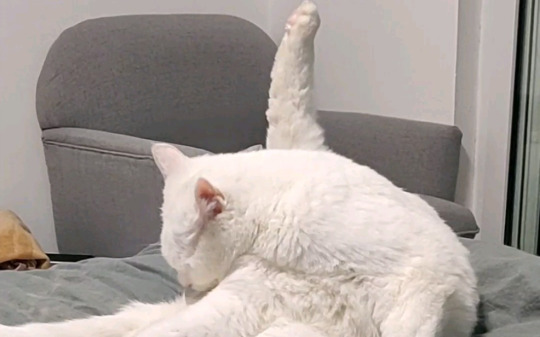
^ An inhabitant of Planet Meow sending signals back to its mother planet.
Another common internet slang for the act of kissing, sniffing, or hugging a cat out of adoration is “sniffing cat”/“吸猫”/ximao. As some might notice, the term subtly and playfully draws a parallel between the addictive aspect of cuddling with a cat and the addictiveness of illicit drugs. Finally, because 喵 (miāo), the character for “meow”, is a homophone of 妙 (miào), the character that can mean “great”, on videos where there are cats meowing clearly, you can see barrage comments from many people asking questions like “how is my exam going to go” or “how is my job interview going to go”, as a playful way of wishing for things to go smoothly in the near future.
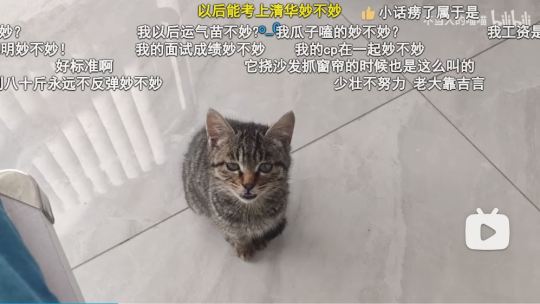
^ Some examples of these barrage comments, with people asking “how is my job interview score”, “how is my luck in the future”, “am I going to be accepted into Tsinghua University”. Video from Bilibili.
And that is all for the history of cats in China! In Part 3 and Part 4 I will cover famous paintings about cats and poems of cats, and these posts will be coming out within the next two weeks, stay tuned!
294 notes
·
View notes
Text
Chinese Folk Religion: Snowy edition
Recent snow storms where I live has got me thinking: is there a deity responsible for snowfall and winter in traditional Chinese religion?
You got Frau Perchta/Holle in Germanic folklore, Yuki-Ona in Japanese Shinto folk beliefs, Skadi in Norse Paganism, and Morana in Slavic mythology, but I haven't ever heard of such a figure from my elders growing up.
So for this one, I had to actually use my limited Mandarin skills to do research, along with some help from more fluent family members and friends.
It turns out there are more than one traditional winter & snow deities in Chinese folklore. The reason I personally didn't hear of any is because, again, Chinese folk religion is extremely regional. There are central major deities that are uniform but the rest all differs from region to region. Han Chinese people have always spread out across several climate zones, from tropical to sub-arctic. Understandably, Gods and Goddesses associated with weather will differ from region to region. My Chinese side of the family hailed from a region where snowfall isn't very common, and winter isn't normally extreme. But look towards regions north of the Yellow River, and it's more upstream valleys in the Han Chinese heartland, it's a different story.
Teng'Liu: The Spirit of Snow and Frost
The first deity I can find is a figure named Teng'Liu (藤六). This is a male deity associated with snow itself. The "Liu" part if his name is the Chinese character for 6. Snowflakes typically have six arms/branches regardless of pattern. In Chinese numerology, the number 6 is also a number with "extreme Yin energy" (极阴). Snow itself is a thing with a lot of Yin energy too, as it's formed from water. Those familiar with Chinese cosmology should be familiar with the element's association with the cardinal direction of North. Which, again, is attributed with Yin. Thus explains why many forms of his folk names contains the number 6.
There is a folk ritual (which thankfully hasn't been practiced in over a century), which in Northern villages they used to offer up a young girl to this snow deity as a gift to appease him. The unfortunate girl would be tied up in a sack and left to the elements in the cold.
Teng'Liu occurs often in poetic works of literature as a stand-in for "snow". A fitting example is a work from Song dynasty writer and poet Yang Wanli, where he mentions "The Azure Lady pulls along Teng'Liu, as the Sun wilts away as she shakes (him)"** The meaning is obvious, but he mentions an Azure Lady, which takes us to another deity.
Qing'nu (青女): The Azure Lady
The second deity associated with snow and winter is a Goddess called Qing'nu, or "The Azure Lady", "The Lady in Turquoise", "The Lady in Blue", depending on the translation. She seems to be much more well-attested in ancient religious texts in addition to poetry and seems to predate the emergence of Teng'liu.
Attested in Huainanzi, a text compiled around 139 BC, "...three moons into autumn, Qing'nu emerges (from her home), and makes frost and snow fall..."
She is also mentioned as having white hair in a lot of classical Chinese poetry.
In traditional Chinese folk beliefs, Qing'nu resides in the moon and is a companion/handmaiden of the Moon Goddess Chang'E (嫦娥). Every year at the end of autumn, she will emerge from the moon palace to perform her duty: to bring winter, frost, cold, and snow. She will descend upon Mount Qing'yao (青要山), where she will bathe in the waters there to purify herself. She will then start playing her seven-stranded lyre and snow and frost will fall upon the earth to cleanse the land of impurities and diseases (until they come back next summer).
BTW Mt. Qing'yao is an actual mountain in Henan Province. The mountain itself does play a rather big role in traditional beliefs and in Taoism. In fact, there is a hill adjacent to the mountain named Qing'nu's Peak (青女峰), where on the peak there stands a pillar-like rock. In local folklore they say that lone pillar looks like a slender lady, standing atop the mountains looking down upon the earth. It marks where the Goddess herself stands every year to bring winter. The locals call it "the maiden's rock" (闺女石).
Legend has it there was once a gorgeous palace at the foot of this mountain where Qing'nu would stay in temporarily during winter. This could possibly be a reference to some type of structure used as a shrine or temple. Today only the spring that flowed in the palace remain. The very spring that, according to folklore, that the Goddess herself bathes in to purify herself. Today, young ladies from around would make pilgrimage to that spring to welcome her arrival on 14th day of the ninth month. A second pilgrimage would also be made on 13th day of the third month as she is supposed to leave and return to the moon. (the dates are the dates in the Chinese lunar calendar).
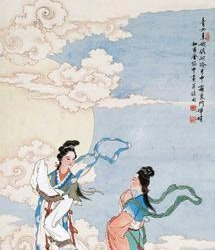
From these we can see while those deities are all associated with snow, they are seen by the people as very different. Teng'liu is very embodiment of the weather phenomenon, kind of like Jack Frost in American folklore. The fact there were rituals to appease him means that he is seen as a very unpredictable and volatile force. A spirit which has to be controlled under strict orders from a higher Celestial deity (天神): Qing'nu. Think of her as the Chinese counterpart to Frau Holle, a spirit attributed to making snow fall but not the snow itself. Or rather, think of those two like Helios and Apollo in Greco-Roman mythology. One being the sun itself and the latter being the one who pulls the sun across the sky.
This was fun, i hope all you folks who are trying to connect to their ancestral beliefs found this useful.
**translation might be off, sorry. Middle Chinese is difficult even for fluent speaker who studies old literature, plus this was Middle Chinese in it's poetic form.
#chinese folk religion#folklore#chinese folklore#history#ancestors#witchblr#witches of color#han chinese#chinese diaspora#folk taoism#chinese mythology#chinese religion#folk religion#polytheism#world religions
53 notes
·
View notes
Text
Princess Galatea Cypress, Lady Whitemarch

“Legend of the Cryptids - Caella reg.” © Applibot Inc, accessed at the artist’s gallery here
[The yang to General Abdalla Aulorian’s yin, this character is definitely @strawberry-crocodile‘s darling, the main NPC in the one-on-one Pathfinder game she’s running for me. The stats and flavor-text have been written with her approval. I find it delightful how we both brought a lawful evil, deeply resentful, character to the table, but they both have very different approaches and personalities despite that. Like Abdalla, I do intend to have more stat blocks of Galatea in the future, but she has changed less so far in the game.]
Galatea Cypress
CR 12 LE Humanoid (human)
This woman is statuesque, with blond hair reaching down to her waist and piercing indigo eyes. She is beautiful and youthful, but her face is as hard as the sword on her hip.
To Galatea Cypress, to love something is to control it. Her father, who doted on her and followed her whims until a runaway wife soured his mood. Her brother, who can be guided and manipulated like a dog. Her servants, who follow her orders on threat of punishment. And most of all, her wonderful toys, glimmering porcelain automata that obey her to the word. And anyone and anything she cannot control? Well, they can be discarded or destroyed.
Although Galatea is a skilled duelist, she typically fights with her rapier only to toy with an opponent or to put something out of her misery. She’s used to getting her hands dirty; in a fit of pique when she was fourteen, she stabbed her father’s prized stallion to death. Still, she prefers to stay in the back ranks, using spells to debilitate and distract enemies until she can finish them off, or one of her allies can do it for her. Galatea’s most treasured minions are her squad of porcelain soldiers and her right hand monster, the sahkil Baetrachulltchum (but call her Betty). Galatea would not hesitate for a second to sacrifice any or all of her followers in order to save her own life.
Galatea is the eldest daughter of one of the most powerful families in the Whitemarch province of Taldor, giving her the titles of Princess and Lady Whitemarch. Because of her gender and the Taldan legal code, she has no claim to her family estate, and has always felt deeply bitter towards her younger brother. She currently schemes for ways to usurp the power of her house, or at least redirect its wealth and prestige to supporting her projects alone. She is terrified of death because she has a sickening certainty about where her soul will go when she dies. As such, she is experimenting with combining construct and living creatures, with the ultimate goal of living forever in a magnificent porcelain body. Most of her humanoid testees/victims have not survived her ministrations, but rumors of a captured Chelish officer, a tiefling woman who survived a great fall with only a shattered ankle, have given her the idea for her next experimental subject.
Porcelain Construct (Simple Template)
Galatea’s favorite medium for crafting constructs is porcelain. These creatures are beautiful and easy to control, but are somewhat more fragile than the average construct. “Porcelain construct” is a simple template that can be added to any creature with the clockwork subtype. A porcelain construct loses its vulnerability to electricity, and does not need to be wound. It gains vulnerability to sonic damage, and is treated as a crystalline creature for the purposes of shatter, shout and similar spells and effects. A porcelain construct uses the Craft (ceramics) skill instead of the Craft (clockwork) skill, but otherwise has the same cost and construction requirements.
Galatea Cypress CR 12
XP 19,200
LE Human aristocrat 1/wizard (enchantress) 12
Init +6; Senses Perception +8
Defense
AC 18, touch 14, flat-footed 15 (+2 Dex, +1 dodge, +1 deflection, +4 armor)
hp 48 (1d8+12d6)
Fort +4, Ref +7, Will +12
Offense
Speed 30 ft.
Melee +1 rapier +9/+4 (1d6+1/18-20)
Special Attacks beguiling touch (7/day, Will DC 20, 6 rounds), shape emotions (12 rounds/day)
Spells CL 12th, concentration +18
6th—greater dispel magic, greater heroism, serenity (DC 21)
5th—silent crushing despair (DC 19), dominate person (DC 20), mind fog (DC 20), rapid repair
4th—charm monster (DC 19), dimension door, fire shield, silent hold person (DC 18), overwhelming grief (DC 19)
3rd—inflict pain (DC 18, x2), lightning bolt (DC 17), suggestion (DC 18, x2), silent touch of idiocy
2nd—bear’s endurance, cat’s grace, demand offering (DC 17), disfiguring touch (DC 16), invisibility, oppressive boredom (DC 17), scorching ray
1st—charm person (DC 16), crafter’s fortune, disguise self (DC 15), mage armor (already cast), magic missile, shield, unprepared combatant (DC 16)
0th—daze, detect magic, light
School—enchantment (manipulation subschool)
Banned Schools: divination, necromancy
Statistics
Str 10, Dex 14, Con 8, Int 18, Wis 12, Cha 17
Base Atk +6; CMB +6; CMD 26
Feats Craft Construct, Craft Magic Arms and Armor, Craft Wondrous Item (B), Defensive Combat Training, Dodge, Improved Initiative, Poison Use*, Scribe Scroll (B), Silent Spell (B), Spell Focus (enchantment), Weapon Finesse
Skills Bluff +20, Craft (alchemy) +14, Craft (ceramics) +14, Diplomacy +19, Disguise +13, Heal +5, Intimidate +26, Knowledge (arcana, planes) +16, Linguistics +8, Perception +8, Ride +6, Sense Motive +5, Spellcraft +17
Languages Abyssal, Celestial, Common, Draconic, Infernal
SQ bonded object (amulet of spell cunning), enchanting smile +4
Gear headband of mental prowess +2 (Int, Cha, Intimidate), amulet of spell cunning, circlet of persuasion, tunic of careful casting, poisoner’s gloves, vambraces of defense, +1 rapier, cloak of resistance +1, noble’s outfit, signet ring, 500 gp worth of nonmagical jewelry, alchemist’s lab, masterwork potter’s tools, surgeon’s tools, 1500 gp worth of miscellaneous poisons, spellbook (prepared spells plus planar binding, geas/quest, lesser planar binding, magic circle vs. good, magic circle vs. evil, magic circle vs. law, magic circle vs. chaos, eagle’s splendor, fox’s cunning, make whole, cantrips)
*Poison Use can be taken as a feat. The prerequisites are Craft (alchemy) 3 ranks.
#galatea cypress#lady whitemarch#pathfinder 1e#npc#monster girl summer#in this case monster is definitely in the moral sense#for now
58 notes
·
View notes
Text

Anchang Sugar Dance Artist
Taken in Anchang, Shaoxing, Zhejiang province. The process of pulling sugar is a local specialty. This process is very skillful and the master appears to be dancing.
Photograph: Zhonghua Yang
Pink Lady Food Photographer of the Year
#zhonghua yang#photographer#culture#pink lady food photographer of the year#anchang sugar dance artist#anchang#shaoxing#shejiang province#china#pulling sugar
1 note
·
View note
Text
Into the Erlang-verse: Li, Zhao, Yang
-This is something I wrote for fun and reference purposes, back when I was starting to seriously get into Chinese mythology. As such, there is no citations, and is meant to be more of a general introduction to Erlang Shen in pre-modern writings.
(Emphasis on "pre-modern", because, as much as I love the Lotus Lantern + Prequel TV series, it's just a little frustrating to see people taking the shows' version as the end-all-be-all of such a complicated deity, y'know?)
-Anyways, much like Nezha, his Archery Accident Bro, Erlang has what I'd refer to as his "Pop Culture Form": Handsome three-eyed warrior god wielding a three-pronged spear, accompanied by his doggo Xiaotian Quan(Literally "Skyhowler"), going by the surname "Yang", jade emperor's nephew, etc.
-However, The Second Lad is an even messier amalgamation of deities worshiped in different parts of China, even in his supposed "home domain", Sichuan. Here, I'm only gonna talk about the most well-known and significant Erlangs.
(Not even gonna go into the possible Zoroastrian influences and the Dujian thing...)
1. Lord of Sichuan, "Li Erlang"
Key words: Hydraulic engineer, based on a historical official and his son, fierce competitor with Zhao Erlang for the Lord of Sichuan title
Weapons: Knowledge
Power: Can turn into a bull/dragon
Pets: N/A
"Who's Yang Jian? I've been watching over Sichuan since the Qin dynasty."
Li Bing was a pretty typical case of famous historical figure being worshiped as gods posthumously; born in the Warring States era, this official was put in charge of the Shu Prefecture (modern Chengdu) by King Zhao of Qin, and he was known as the creator of Dujiang Yan, an ancient irrigation + flood control project.

Later Tang legends deified him with a bunch of traditional "Flood-control hero" tropes taken from Yu the Great (heads up JTTW readers, SWK's staff is originally his extendable ruler), mostly the "hero turn into a giant animal" and "fight and subdue local water demons" aspect.
Though he wasn't yet known as an Erlang, or gained a son called Erlang as later folklore would have it, Li Bing's worship began in the Eastern Han dynasty, and he had a long tradition as Sichuan's guardian deity.
Even as later versions of Erlang began to populate, in the Qing dynasty, people of the province were still like "Our Lord of Sichuan is Li Bing/Li Erlang, not Yang Jian, as the novels would have you believe!"
What made Li Bing and his likely nonexistent son into "Li Erlang" could be traced to the two "warlord states" that occupied Sichuan after the fall of Tang dynasty: both states tried to use the Lord of Sichuan worship to strengthen their own legitimacy, and passed decrees that 1) said Erlang was Li Bing's son and 2) granted both father and son honorable titles, as mentioned in Song dynasty records.
However, due to the association of Erlang with previous warlord states, the first emperor of Song had reassigned Li Bing a lesser title and taken away his son's title altogether, reducing him to just "God of Guankou", and worshippers were quite disgruntled by the change; there was even a rebellion using the Guankou worship rituals to legitimize itself, a decade after said emperor's death.
Fun fact: when I went to the Two Lord’s Temple (of Li Bing and Li Erlang) in Dujiangyan, even though the god worshipped in the main hall was supposed to be Li Erlang, the plaque next to it still said something like "Li Erlang, also known as Yang Jian"...
Which really shows just how influential FSYY is on popular worship, to the point of overshadowing older incarnations of certain deities.
2. Immortal Master of Illustrious Sagacity, "Zhao Erlang"
Key words: Chief of Jiazhou Prefecture, dragon slayer, No.2 violator of archery safety (first place goes to Nezha)
Weapons: A scribing tablet, slingshot, sword, bow and arrows
Power: Supernatural strength, monstrous giant form
Pets: unnamed white horse, hunting hawks and hounds
"C'mon, my aim isn't that bad! What happened in the Zaju was a one-time thing!"
The prototypical Taoist Erlang, his name, "Zhao Yu"(赵昱) first appeared in a Song dynasty source. At this point, the story of Erlang was mainly defined by two traits: 1) was, or was related to an official in charge of Sichuan in bygone times and 2) Did heroic flood control stuff, probably through dragon-slaying.
One notable strand of local worship was the "God of Guankou"; historical records mentioned that people sacrificed hundreds and hundreds of goats to him, as well as a regional festival in Sichuan where people played out his confrontation with dragons. It coexisted and entwined with the "Lord of Sichuan" worship, until the Song dynasty.
In typical Song dynasty fashion, the officials decided to give their own official title to this...Erlang/Lord of Sichuan/God of Guankou guy, bringing our titular "Zhao Erlang" into existence.
Also a deified official from the Tang dynasty, his image was more heavily influenced by Taoism (historically popular in Sichuan) and centered around one of its holy places, Mt. Qingcheng, which just happened to be quite close to Dujiang Yan.
Though in the Northern Song dynasty, the state-recognized Erlang was still "Li Erlang", the Taoist Zhao Erlang had proven himself to be a strong competitor by the Southern Song and Yuan dynasty, thanks to a massive amount of opera plays.
First we have SJSSDQ (三教搜神大全, Yuan Dynasty), an encyclopedia of Buddhist, Taoist and Confucian gods, where his traditional backstory as an ascended mortal official was combined with the dragon-slaying feat to nudge Erlang toward a more warrior-esque image, a hunting god who appeared on a white horse with his entourage of hunters.

-We also got the first mention of what would become his six/seven sworn brothers; the "Seven Sages" who jumped into the water to assist him in the dragon fight.
Then we have two Yuan-Ming Zaju plays, "Erlang of Guankou Slays the Jian-jiao"(灌口二郎斩健蛟) and "Erlang Drunkenly Shot the Demon-locking Mirror" (二郎神醉射锁魔镜), in which many traits associated with JTTW's Yang Erlang could already be seen: first, his three-pronged weapon, seven brothers and bow/arrows, second, the naming of his brothers as the "Seven Sages of Mt. Mei" and his ability to shift into a "true form", aka the monstrous giant form he used in JTTW.
(The plot of the second Zaju is exactly like it sounds: Erlang and Nezha had a drunken archery competition, accidentally broke the Demon-locking Mirror and released the Bull Demon King + Hundred-Eyed Demon, and spent the rest of the play doing damage control.)
3. The Little Sage, "Yang Erlang" (JTTW)
Key words: Jade Emperor's nephew, cleaver of Peach Mountain, SWK's true equal in battle
Weapons: Three-pronged, Double-bladed Spear, slingshot, bow and arrows, axe
Power: transformations, Cosmic Body, divine sight/Phoenix Eye(?)
Pets: a celestial Xiquan, literally "Thin Dog"
"First time we met, and that monkey made fun of my origins as a conversation opener. Could you believe it."
The Man, The Myth, The Legend! As I said before, a lot of his traits were inherited from "Zhao Erlang", including his Taoist title, his temple at Guankou, etc.
However, Erlang being Jade Emperor's nephew seemed to be mostly popularized by JTTW: the only other work that might have given Erlang this backstory was The Precious Scroll of Erlang, previously dated to the 1560s, though a Chinese paper published in 2018 proposed a later creation date (1620s).

Much like JTTW Nezha, his backstory was somewhat barebones: we knew from SWK's taunt that his mother was the Jade Emperor's sister, who got chummy with Yang the mortal, gave birth to him, and was presumably locked under the Peach Mountain for that, bc Erlang then rescued her by cleaving it in half with an ax.
(Sounds familiar? The same backstory would later be copied over to Erlang's nephew, in the Lotus Lantern legends)
His other notable feats include falling 2 phoenix with his slingshot, as well as slaying the "Seven Demons of Mt. Mei ''. Out of pride, he chose to remain in Guankou instead of associating with his heavenly relatives, and did not answer to general summons to court from the Jade Emperor, only taking special assignments (听调不听宣).
Apart from his famous fight with SWK, Erlang also appeared in JTTW chapter 63, where, together with his sworn brothers, he helped the pilgrims fight the Nine-Headed Wyrm, son-in-law of Bibo Lake's dragon king. His dog continues to be the MVP in this fight, biting off one of the demon's heads, leaving it wounded and fleeing toward the north sea.
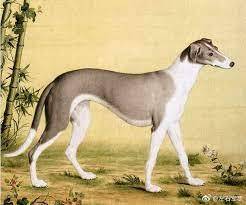
Though the description of his battle with SWK implied that he did have some sort of supernatural sight, at this point in time (Ming dynasty), Erlang wasn't yet depicted with a third eye in artworks and literature.
There are a small amount of evidence that suggest the third eye thing might have shown up in statues of this period, though.

4. Master of the Ninefold Mystic Way, "Yang Jian" (FSYY)
Key words: Disciple of the Taoist sage Yuding, veteran of the Investiture War, Nezha's comrade-in-arms
Weapons: Three-pronged Spear, slingshot
Power: Ninefold Mystic Way, 72 transformations, invulnerable to physical attacks, Samadhi Fire (in FSYY it's on the same level as a D&D wizard's Fireball spell)
Pets: Howling Celestial Dog, unnamed white horse
"I fought a transforming monkey demon too!"
Fun fact: the guy whose name was most often taken as Erlang's "real name" by pop culture was never actually referred to as "Erlang" in his debut novel. Could ya believe it.
Quick, dirty summary of FSYY: kinda like the Chinese Iliad, about the overthrowing of Shang dynasty and its tyrannical King Zhou by King Wu of Zhou, with a dash of Taoist infightings, and almost everyone who died in the fight got revived as gods and became part of the celestial bureaucracy, thus "Investiture of the Gods".
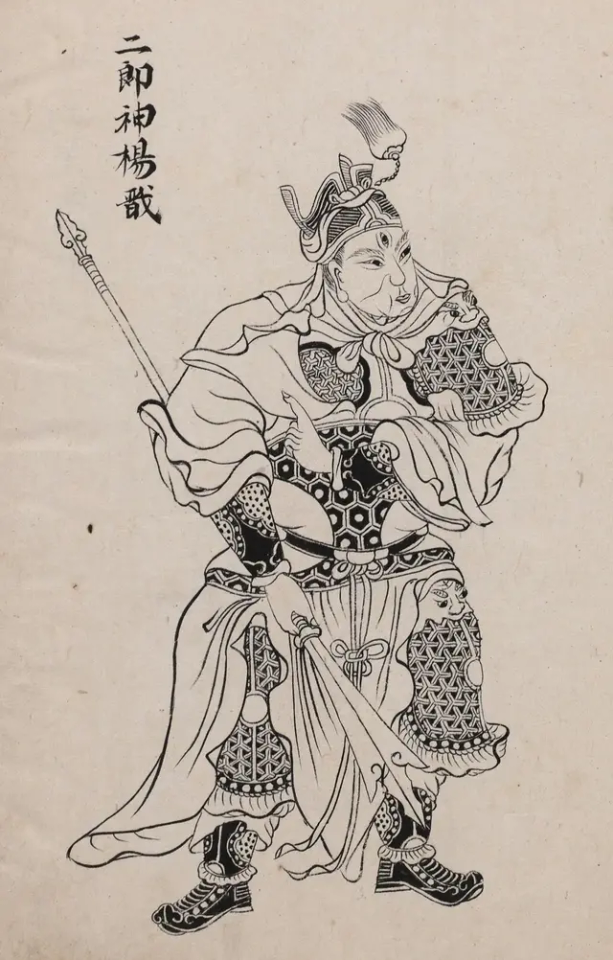
Under the order of his master, the Taoist sage Yuding (literally "jade tripod"), Yang Jian makes his first cameo in chapter 40 to assist his senior, Jiang Ziya, in the fight against the Four Generals of Clan Mo.
A master in the arts of the Ninefold Mystic Way and 72 transformations, he has the same divine title as Zhao Erlang and is considered "A Sage in Flesh" after the end of FSYY.
As such, he's able to survive getting eaten by a monstrous weasel, a metal whip in the forehead, graphic disembowelment, etc. and used his transformation skills for some SWK-style "beating people up from inside their stomachs".
On one very notable occasion, he transformed into a beautiful palace consort to dupe Tu Xingsun ("Earth-traveling Son") and capture him.
Oh, and also, on his way to get Tu Xingsun's master, he ran into this random demon in a lake, who led him into a cave. After he got inside, the demon just disappeared, leaving him with the Three-pronged Two-bladed Spear, as well as some nice bling.
Then two kids burst in, accused him of stealing the bling, and...instantly became his students after learning his name? Yeah that was a weird sidequest.
However, Yang Jian's most iconic battle is probably his fight with Yuan Hong, the White Ape of Plum Mountain...who also practiced the Ninefold Mystics, used an iron cudgel, and were sworn brothers with six/seven demon kings.
Only with the help of Nvwa's magical painting, the Shanhe Sheji Scroll, was Yang Jian able to capture the ape, and subsequently, let Jiang Ziya decapitate him with Sage Luya's Immortal Slaying Flying Knife.
When the Three Demonesses were caught and executed at the end of the book, he was the one responsible for slaying the Nine-headed Pheasant Demoness, which is a neat parallel with JTTW.
His Howling Celestial Dog appears in chapter 47, and is even more of an MVP in fights: 12 immortals and demons have been bitten by this dog, which was "as large as a white elephant and as swift as an owl".
Funnily enough, every time Yang Jian summoned his hound, it is described in the same way as, say, other immortals may summon a flying sword, and my mental image is just him yeeting his giant monster dog at the enemy like you'd throw a Pokeball.
(A list of everyone Xiaotian had bitten in FSYY: Zhao Gongming, his sister Bixiao, Xinhuan, Deng Chanyu, Zhou Xin, Hua Huan, the Winged Immortal, Yuyan, Lv Yue, Yu Hualong, Dai Li the dog demon, the Nine-headed Pheasant Demon.)
Conclusion:
-The way I see it: Li is the Erlang of regional worship, Zhao is the Erlang of Zaju plays, and Yang is the Erlang of vernacular novels, who becomes super popular and overshadows his two predecessors.
-And Erlang's depiction in premodern Lotus Lantern tales is what we in the business call "a whole new can of worms". But that's a series for another day.
#erlang shen#chinese mythology#chinese folklore#journey to the west#investiture of the gods#fengshen yanyi#xiyouji#yang jian
19 notes
·
View notes
Photo

Tears spilled, played a lot... National Singing Contest' New MC Kim Shin-Young, the day of the first recording
#Kim Shin-Young#Butterfly#Gyeonggi Province#Song Hae#Audience#kbs#National Singing Contest#Hanam#Lee Kye-in#Deagu#All states#Yang Hee-eun
0 notes
Text

Ching Yang Tung (Chinese Photographer)
"Fishing Nets, Fujian Province of China".
Photography.
236 notes
·
View notes